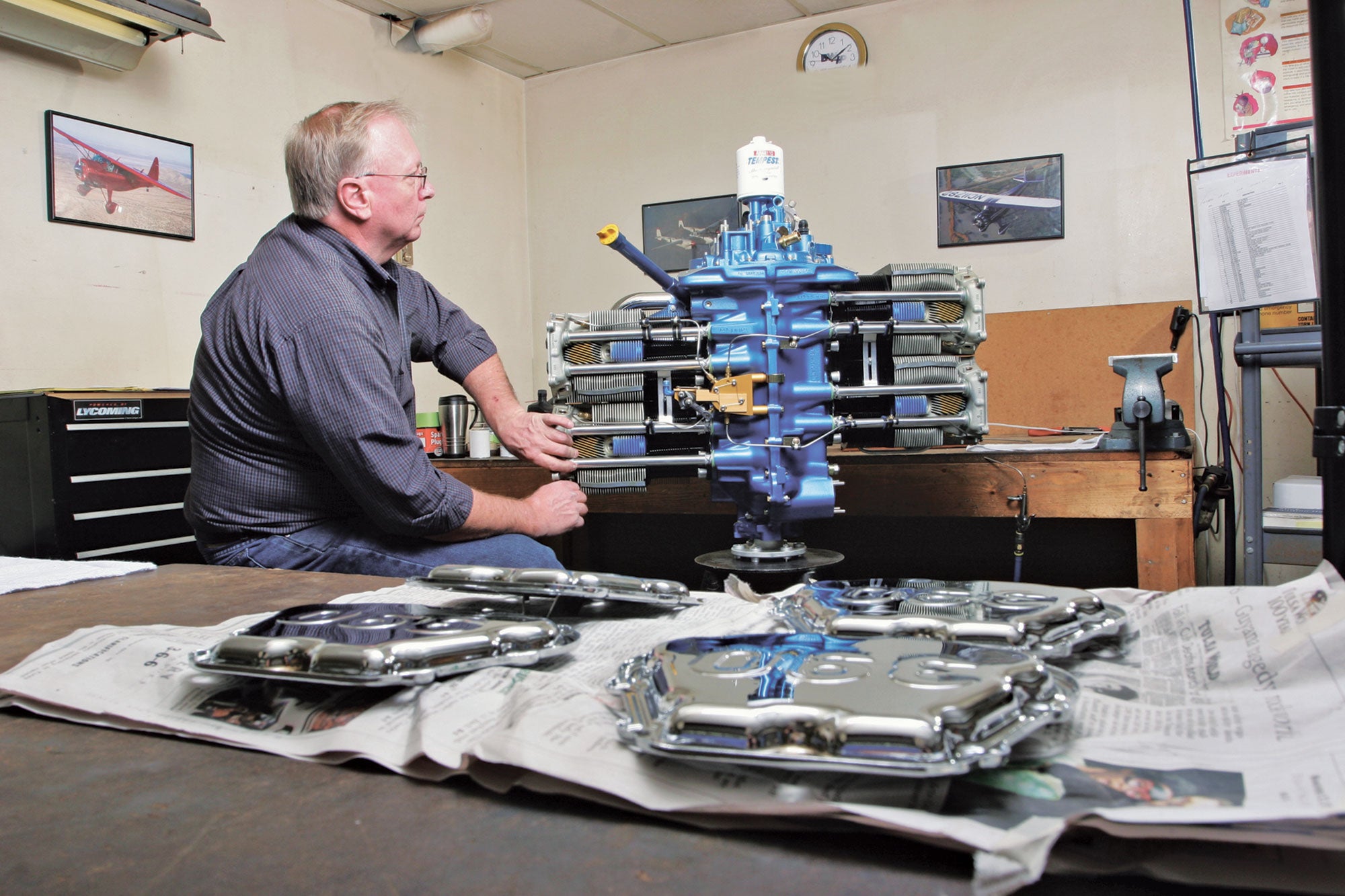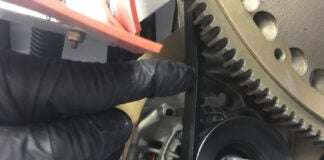
Imagine a time not too long ago when pilots embarking on the delicious endeavor to build their own airplanes could consider multiple sources for just about any engine on the menu. In this halcyon time, the original-equipment manufacturers competed elbow-to-elbow with a small but vital group of custom shops who had access to all the raw materials they needed to build complete engines. Each succeeded on a combination of their reputation, competitive pricing and a mix-and-match menu of features and upgrades.
More to the point, this competition kept a check on prices and lead times. If you’d left your engine choice a bit late, there was a good chance you’d be able to recover. Today? Forget it. You need to commit a year or more out or risk sitting there with a nice, clean engine mount and firewall and nothing to hang from it.
Even so, the variety in the marketplace made room for top-end builders who went the extra mile and could charge for it. It was a buyer’s market in so many ways. Plus, there was innovation, even in the “legacy” aero engine market. (When we say legacy, we really mean Lycoming, Lycoming-style and Continental engines, the slow-turning, big-inch, opposed-cylinder engines we knew from the fronts of Cessnas and Pipers. Apologies in advance to Franklin fans.)
Twenty-plus years ago, companies like Engine Components Inc. (ECI) and Superior had reverse-engineered pretty much every part you needed to build, say, an IO-360 parallel-valve Lycoming. “Oddball” engines, even the now popular IO-390 first created by none other than Monty Barrett, were a bit harder to build from scratch, but still possible. Within this new-parts stream, a consistent flow of good, rebuildable pieces (cylinders, cases, cranks, cams) filled in the parts list sufficiently so you could make just about any legacy engine imaginable. And even though Lycoming was doing well selling engine parts, it decided the custom-engine opportunities were too good to pass up, so Thunderbolt was formed. Superior would sell you whole engines.
This level of competition helped fuel the entire homebuilt movement in the early 2000s. I believe that pilots and owners of certified aircraft started looking seriously at Experimentals in this time frame because of the perceived value. More advanced (if only slightly) engines coupled to exciting airframes and leading-edge avionics that you couldn’t get in a series-produced airplane was the juice here. As the kits themselves got a lot better and builder assistance—formal and costly or organic and nearly free—became widely available, fence-sitters jumped. Into the fray, my friends, and pass me another coffee can of #30 Clecoes.
Then and Now
It’s an entirely different market today, as you’ll sense by reading Tom Wilson’s excellent 2025 Engine Buyer’s Guide in this issue. A shoutout to Tom, who spends months gathering the information, talking to every company represented here. He’s not just collecting specs and prices. He takes the time to talk with company principals and marketing/communications people alike, with the goal of understanding each company’s supply and economic situation.
The point is this: Buying an engine today requires more thought than ever. There are fewer choices—for some engines, there’s only one—and the asking prices, which increased during COVID-related supply-chain issues, continue to rise while lead times also increase. The value proposition we saw two decades ago is long gone—at least forward of the firewall.
What Is Next?
So where do we go? I don’t sense Continental or Lycoming will suddenly have epiphanies. I’d like to be proven wrong, but I don’t think I am. They’ve been without competition for so long in their own spheres, I’m not sure they have the corporate moxie to react. I don’t mean this as a slam, just a recognition that these legacy companies are in a different part of their life cycle. It feels more like end-of-life care than preparing for a vigorous retirement at a still-healthy 65. Continental, for its part, is all-in on Jet A-burning diesels.
Who does that leave? On the Experimental side, auto-engine conversions continue to make inroads, aided by some levelheaded development, the innate quality of today’s car engines and collaboration with airframe makers to smooth the process. I’d love to see some of the smaller innovators get more traction. I respect ULPower’s approach to engine building, but there are still too few of those air-cooled engines out there to create a groundswell. I liked what I saw from the MWfly engines. I had a wonderful tech debrief from the designer last spring and left with the sense that there was a lot of very sharp thinking put into the engines. There are, no doubt, other worthy engines in our realm with just a handful of flying examples, not enough for today’s homebuilder.
That leaves the elephant in the room, Rotax. It’s really no secret that Rotax is working on larger, higher-horsepower engines to expand its line. The turbocharged 916 iS has been a huge success for the company, kicking down doors to airframes that the 915 couldn’t quite finesse open. Imagine a lightweight, high-tech engine in the 200-ish-horsepower range. Imagine that this engine carries over the 916’s good fuel economy. (In truth, the 916 is about average when at high power, but the electronic fuel injection and ignition allow it to post really useful efficiency gains at cruise power.)
Downsides? Sure, cost. Rotax leans heavily on technology and turbocharging to make the 900-series engines good. They’re not going to back away. It’s what they know—an education formed by expensive but incredibly useful trial and error. And while you can get economies of scale for some electronic parts—definitely can leverage your hard-won programming skills—every other part added to the mythical high-power Rotax will add cost.
On top of that, Rotax keeps a clear eye on weight. It’s much easier and cheaper to build inefficiently heavy parts, especially castings. But that’s not Rotax’s bag, so don’t expect the company to cut corners on the core engine to save money. All of that means a Rotax engine to compete with the legacy aero powerplants probably won’t be very much cheaper. But it will be fully managed by electronics, turbocharged and intercooled to give excellent high-and-hot performance and, perhaps most crucially, able to run on high-octane unleaded autogas. Modern, in other words.














There is also the recently certified diesel from DeltaHawk. An inverted, V-4, direct drive , turbo-supercharged, 2-stroke diesel of 180+ HP.
It is a bit heavier than other similar HP engines, but using diesel and the incresare fuel efficiency may compensate for the added weight.
It is currently being evaluated in 2 airframes, so It appears a be new power solution.
The consolidation of aircraft engine makers is not just about competition. It is about strategic interests.
Chinese state owned actors own Continental and Superior Air Parts. Superior makes parts for Lycoming. AVIC, a state owned aviation company, is on the US sanctions black list.
The Chinese also own Cirrus, Diamond, Glasair, ICON, Enstrom, Southern Avionics and Mooney. They also own several smaller general aviation parts makers. All the IP has been transferred to China.
The Chinese in Beijing could shut down general aviation in the free world by simply sending an email to its companies to cease supplying anything to the aviation industry.
That is exactly what will happen when Beijing moves on Taiwan.
The Rotaxes would happily run on high-octane unleaded autogas – if only we could GET unleaded, ethanol-free auto gas. Sadly, the legacy engine manufacturers kept producing engines that required lead, right up to the present, and the fuel vendors want to sell only two fuels: Jet A plus one – and that one is 100LL, which gums up the Rotaxes (and quite a few legacy engines) quite badly.
BTW, I keep seeing the claim that the high-power engines that require 100LL are responsible for the majority of the fuel demand. I’ve yet to see any reliable data to prove that. Not saying it isn’t so, necessarily, but I have to wonder…
I ran across an amazing engine design recently that has evidently been around for a few years. The Koenigsegg Tiny “Friendly” Giant. 155 lbs (+ systems) and 300hp without turbos. 600hp with turbos.
Yes, the electromagnetic valves are a very bleeding edge idea, but if they fail in the closed position, it might be a partial power loss instead of a bad chain of events in mechanical valve failures.
I know, wishful thinking.
https://en.wikipedia.org/wiki/Koenigsegg_TFG